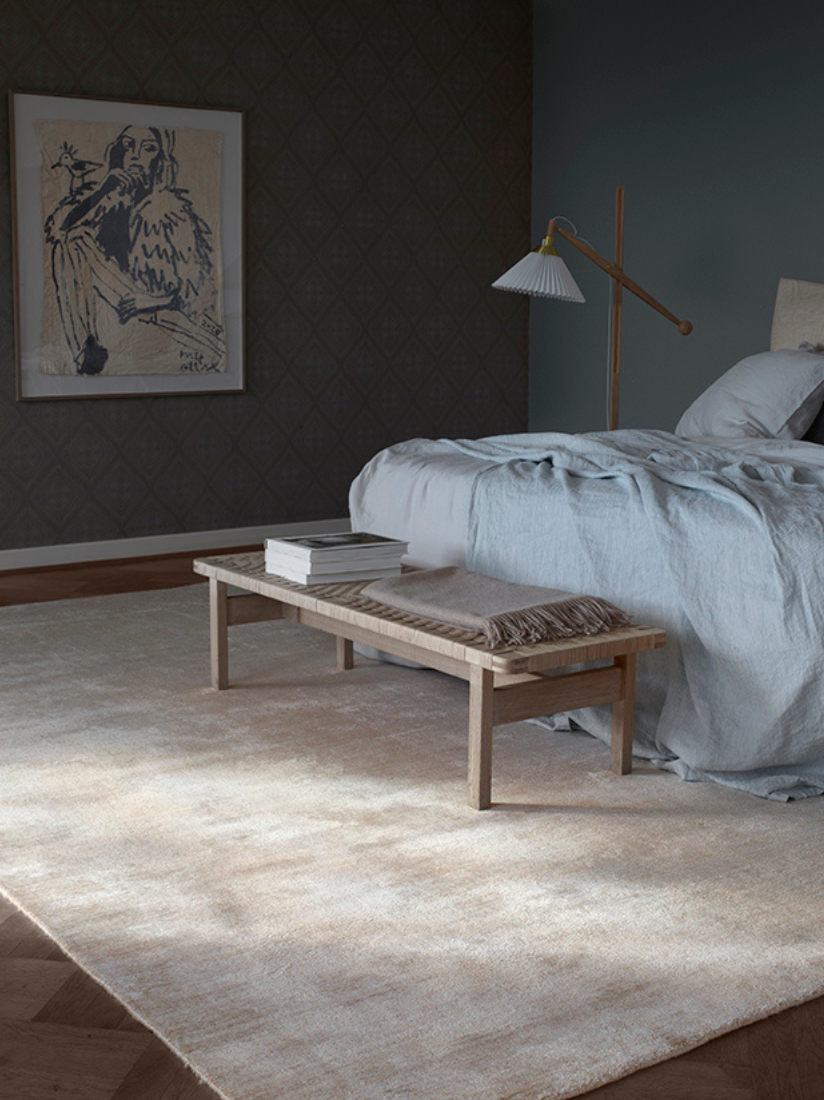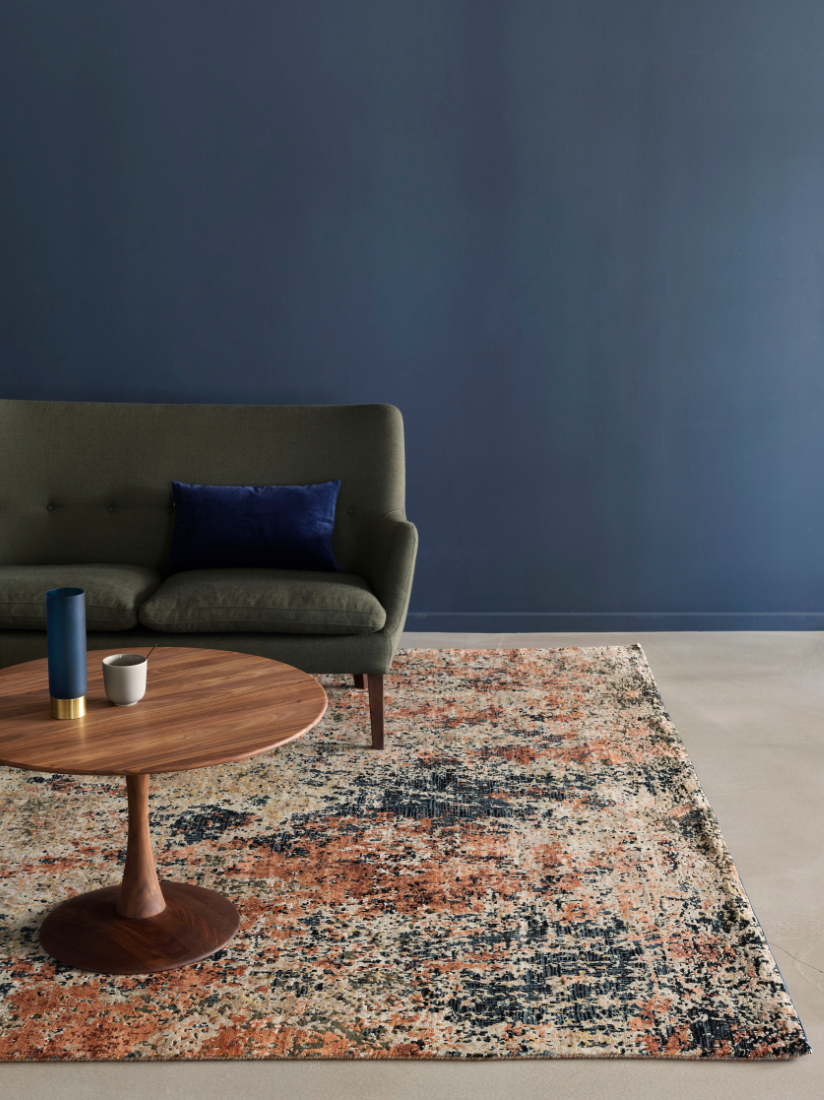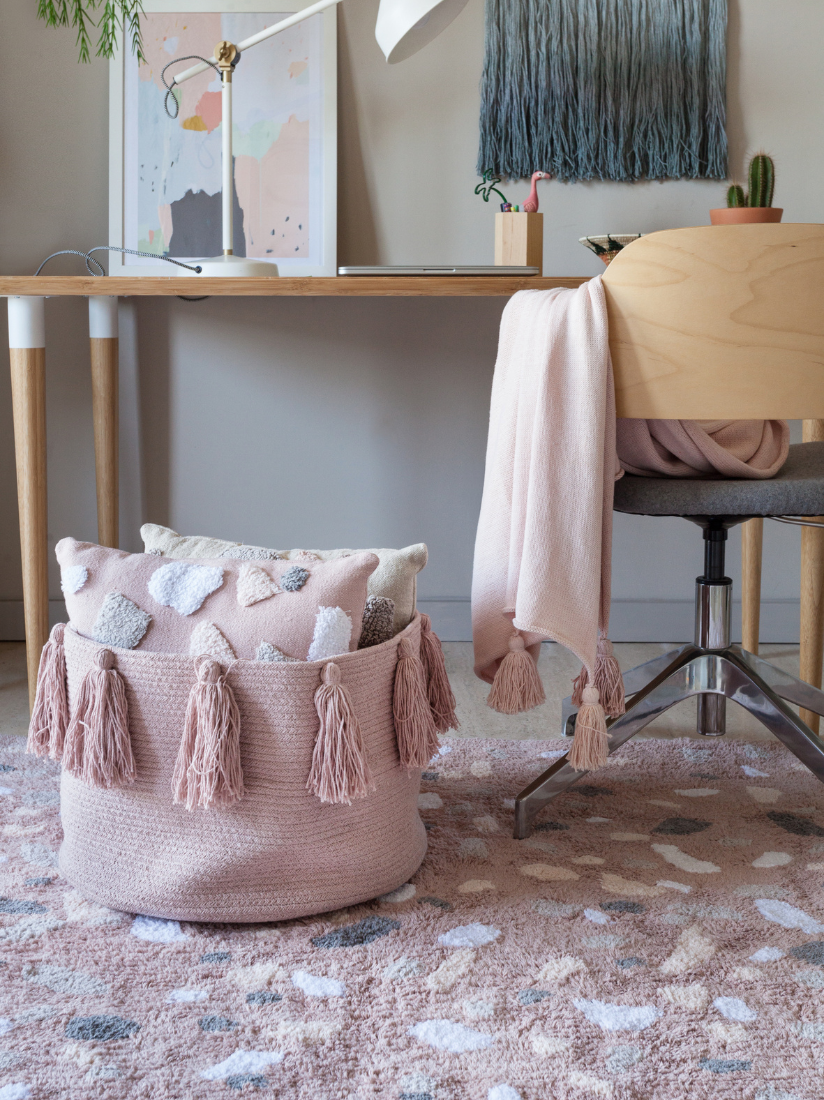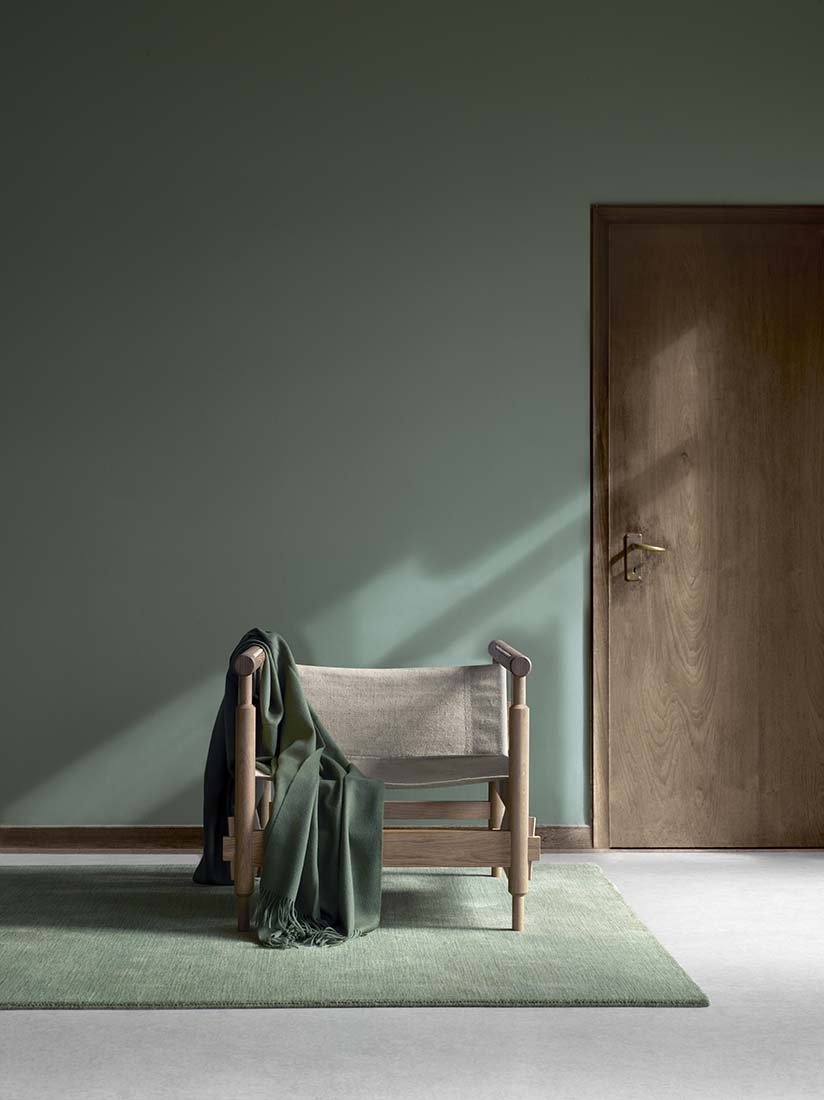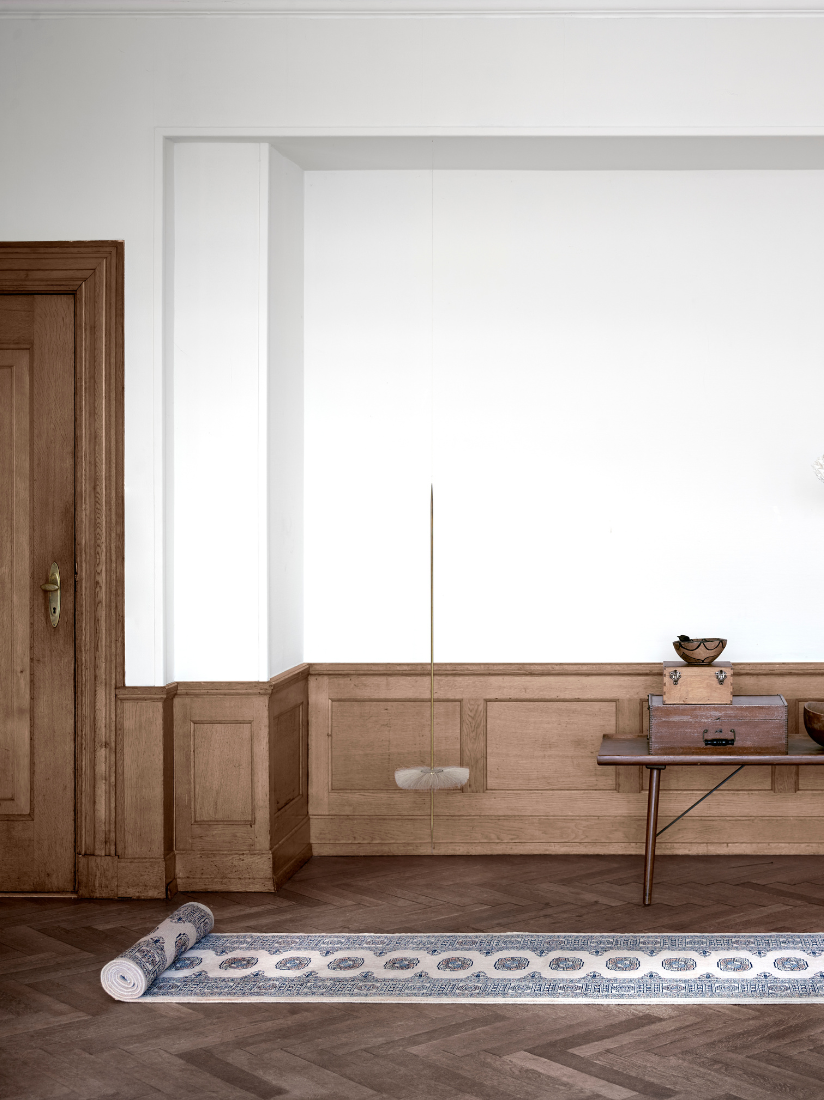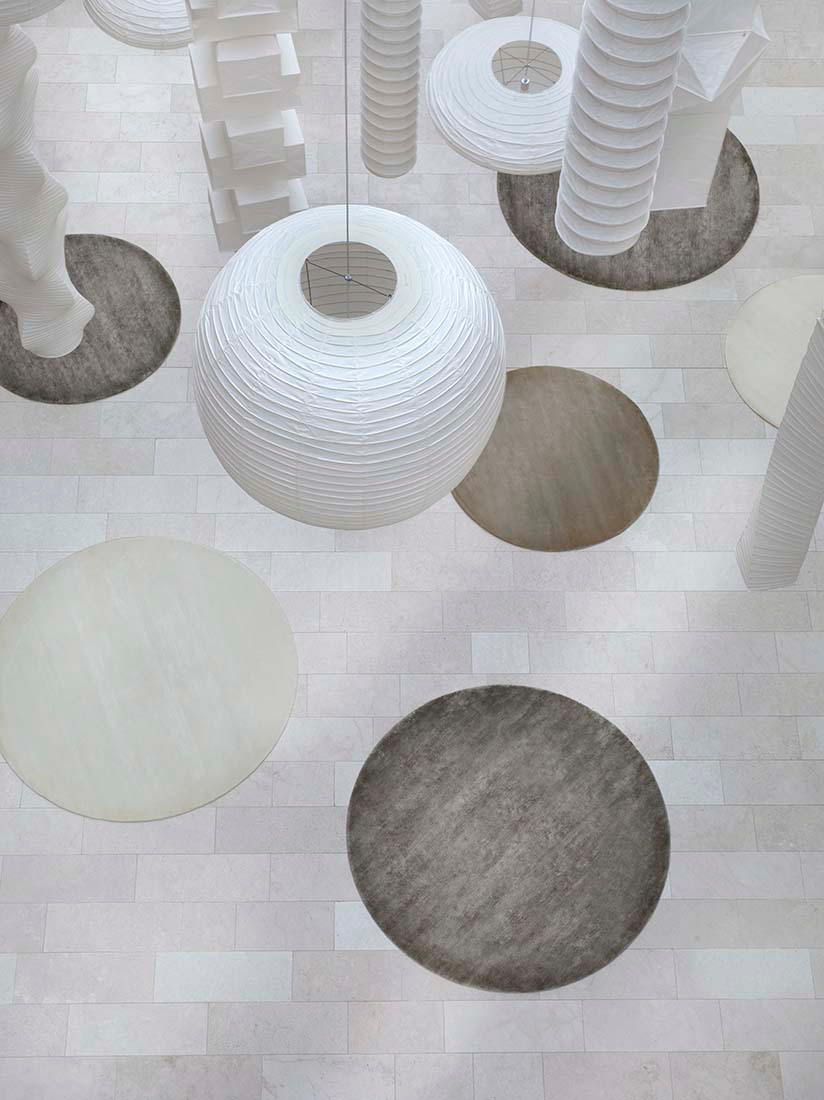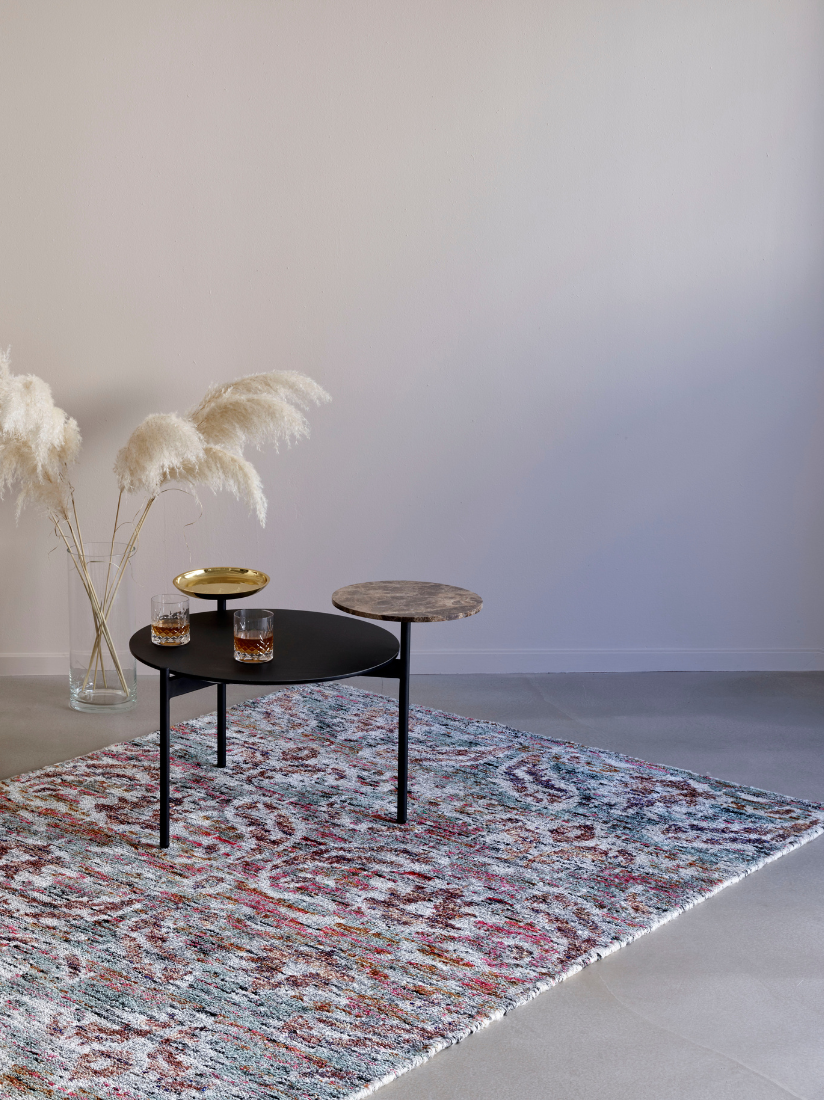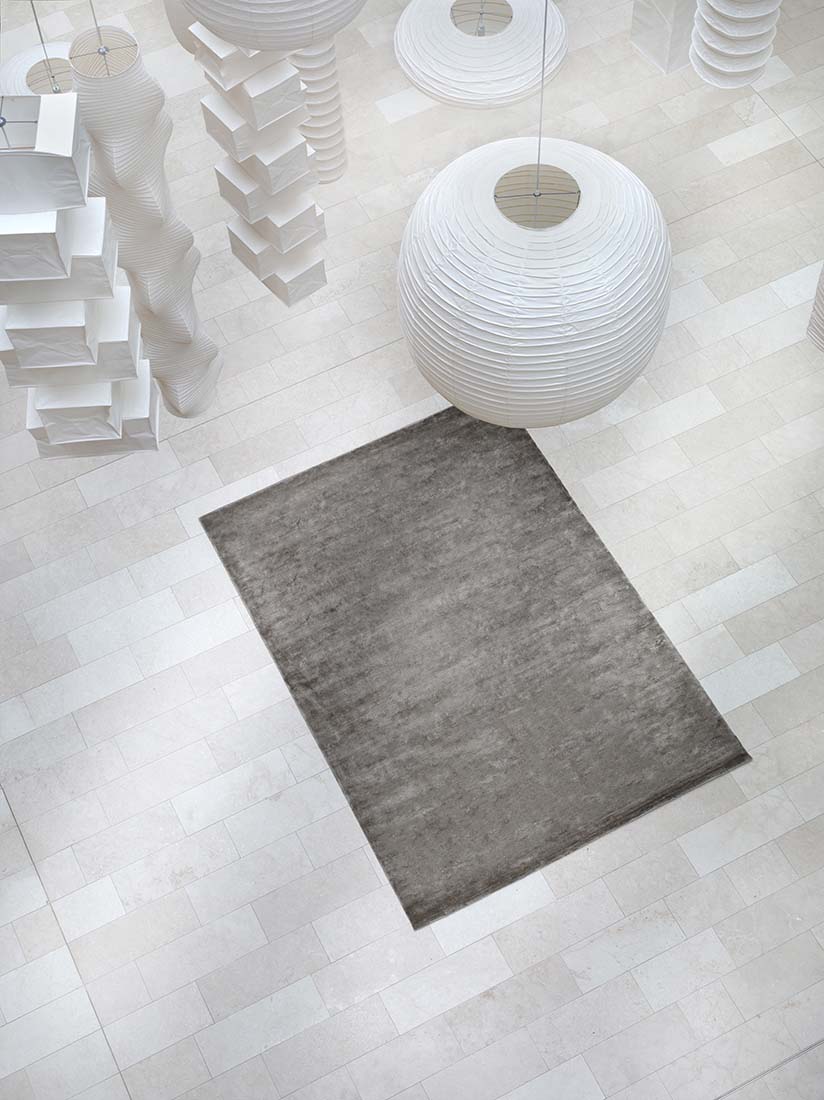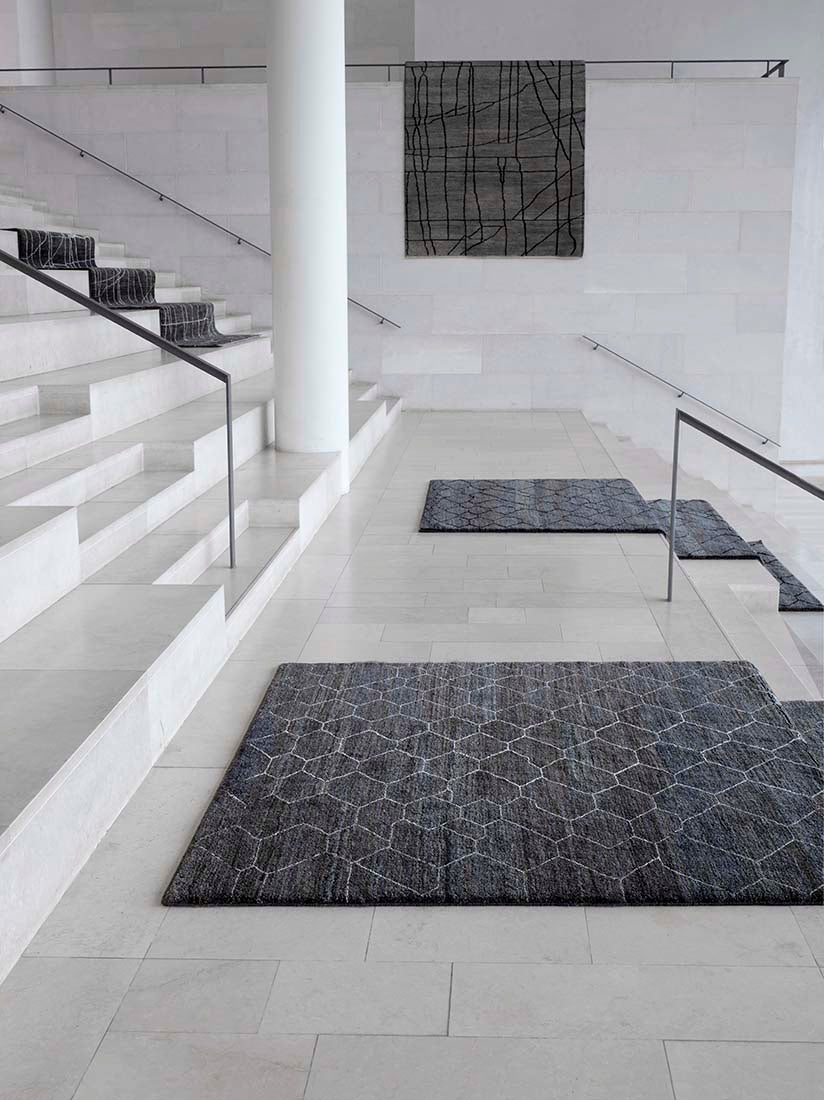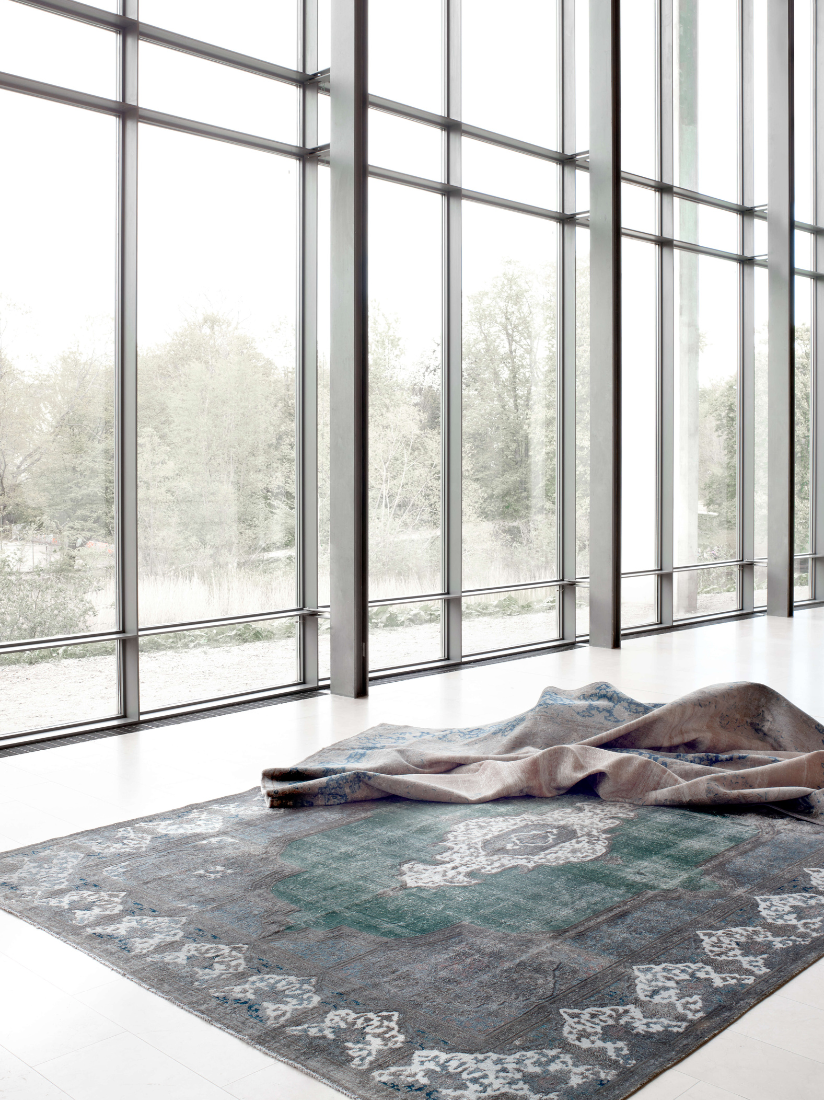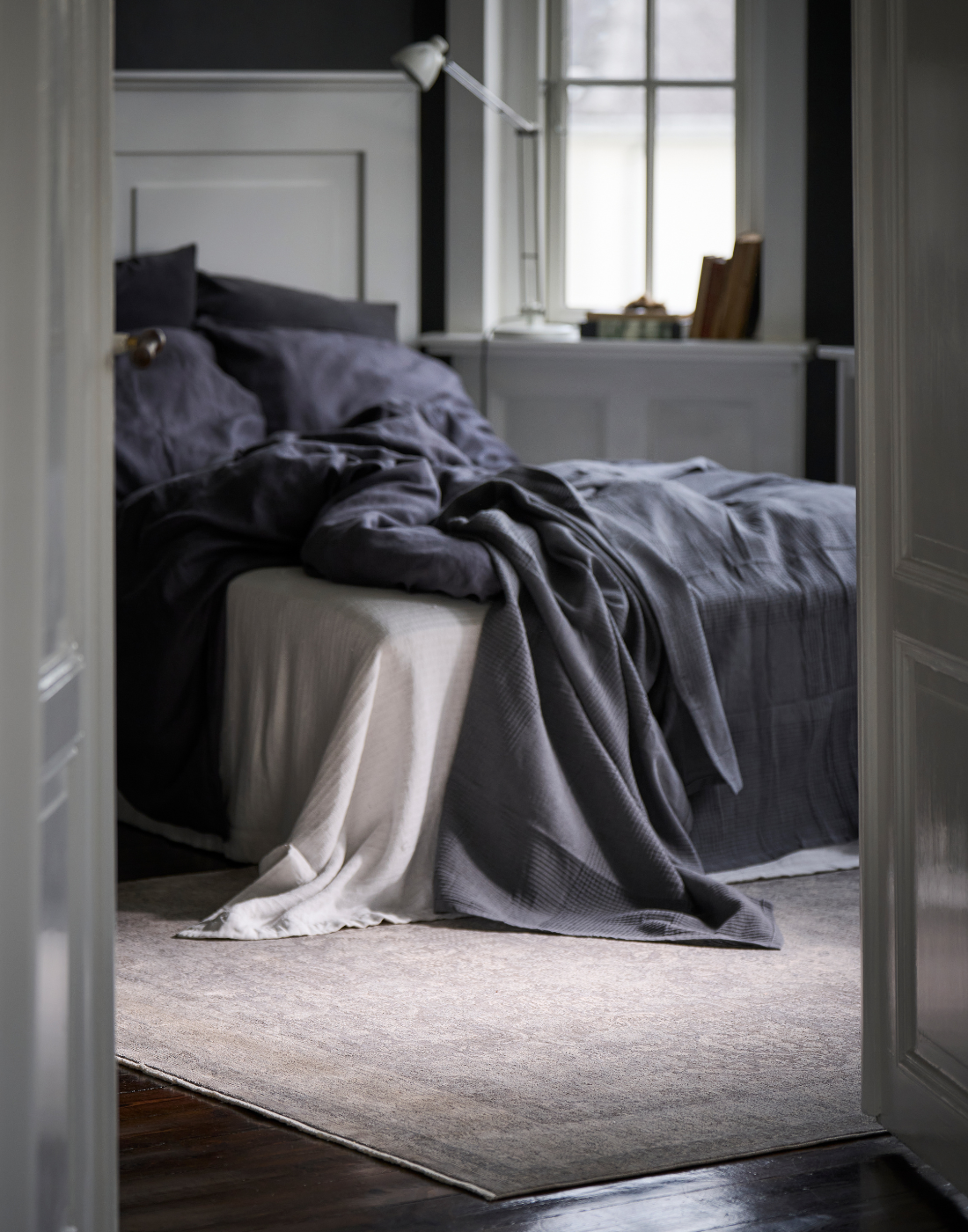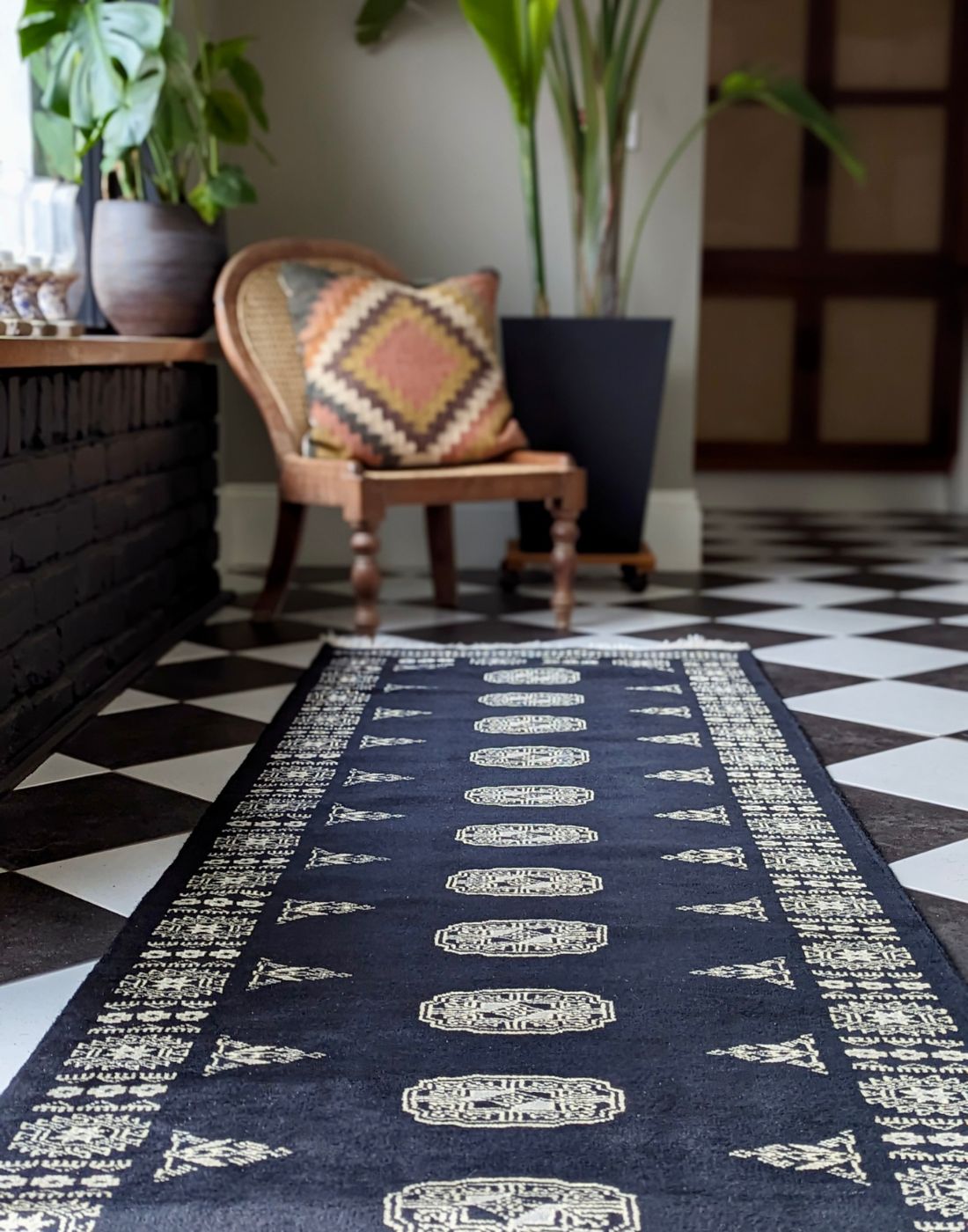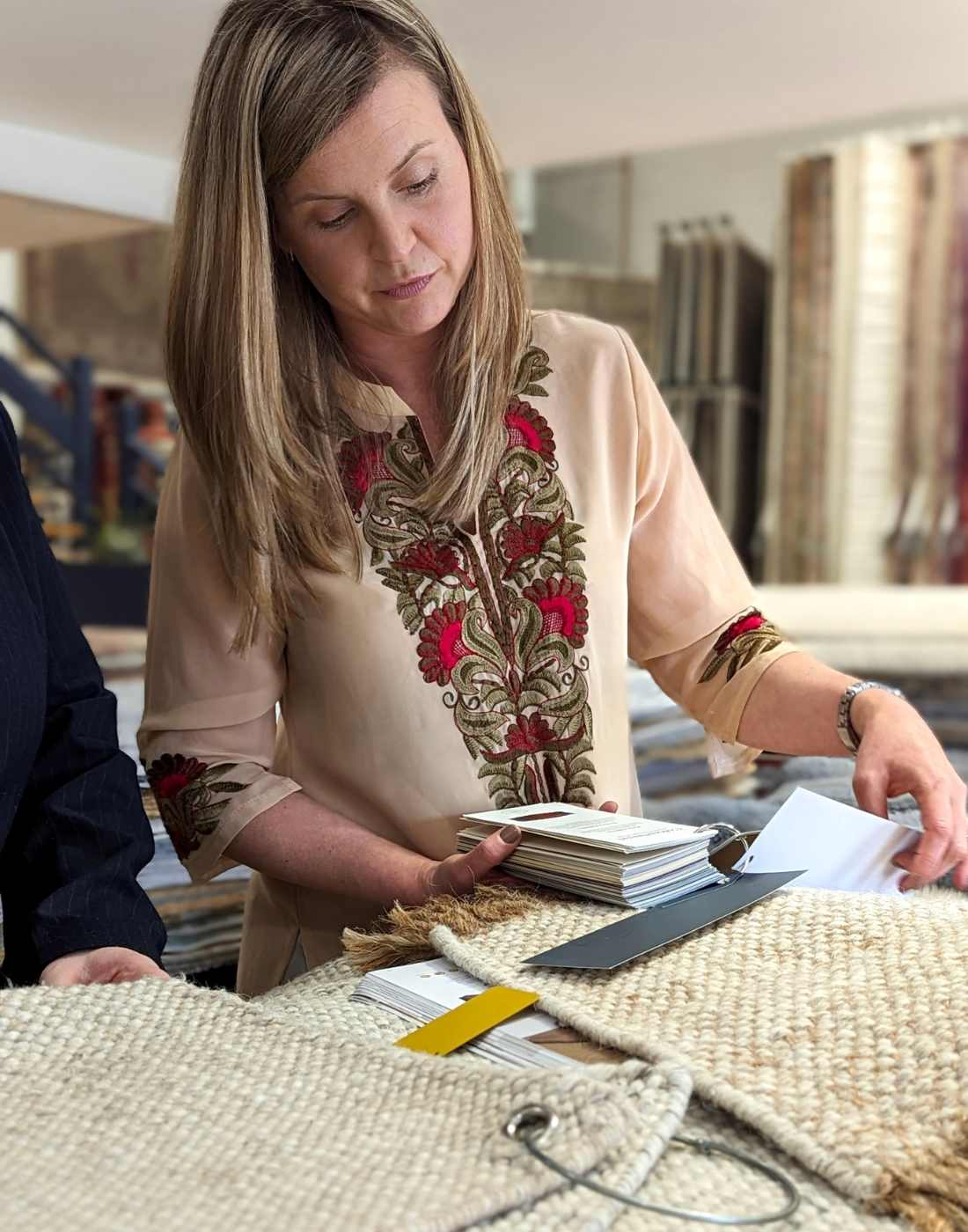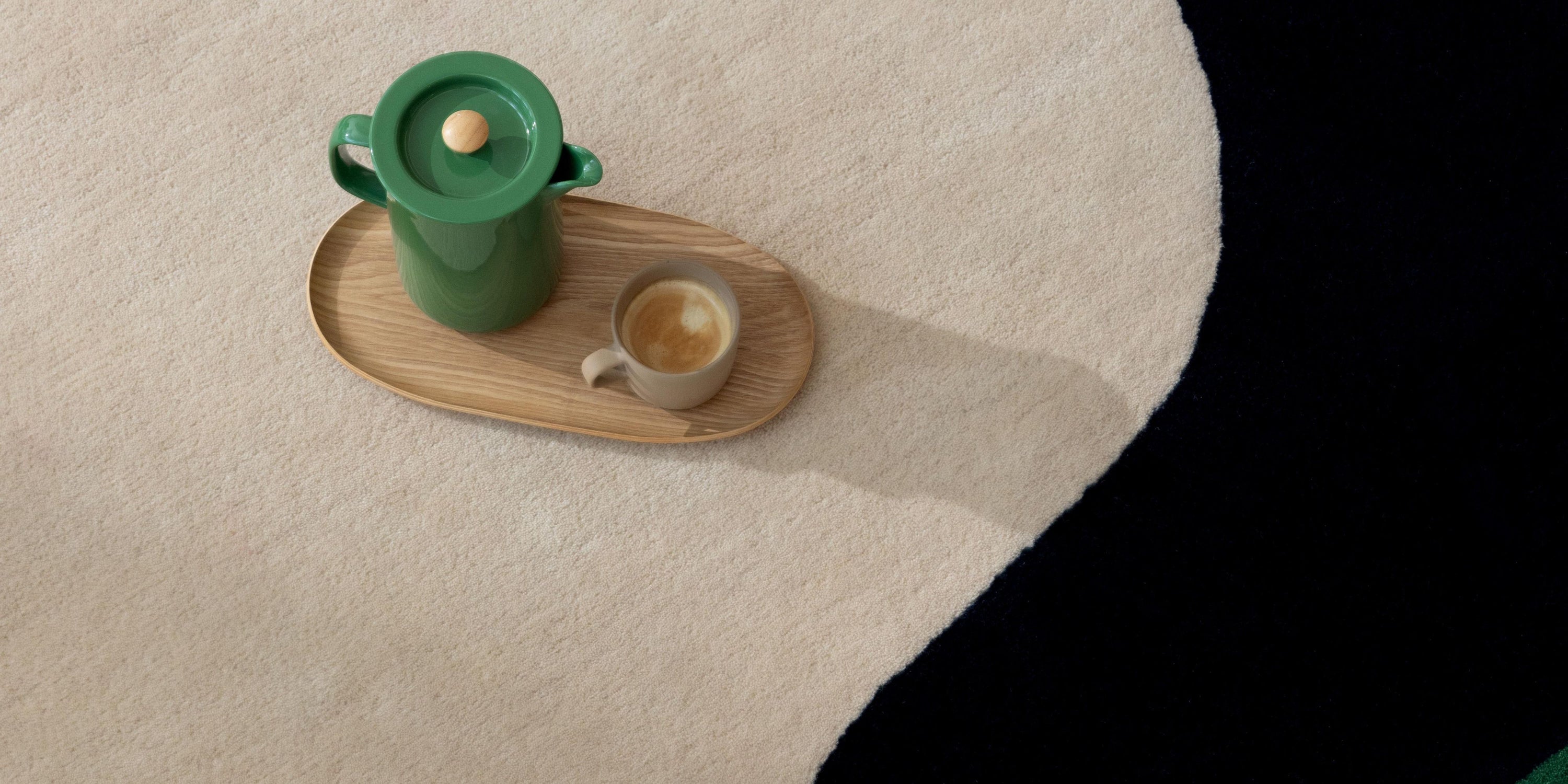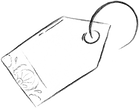
Rugs.ie x Geri Designs
The Rugs.ie x Geri Designs collection can be vacuumed and spot cleaned with ease. We've outlined a few best practices below.
Vacuuming: You can vacuum your rug weekly to prevent a build up of dirt and dust. Always vacuum on the lowest setting and avoid using a rotating head or beater bar as this can damage the pile.
Spot Cleaning: You can spot clean your rug using a mixture of diluted non-biological detergent, such as Woolite, and warm water. Use white, clean cloth to blot (never rub) any stains or spills. For stubborn stains, repeat the process a few times, leaving the rug to dry in-between each clean.
Sprouting: As your rug is handmade, small strands may 'sprout' above the pile. This is completely normal and simply part of the handweaving process. We'd recommend tucking any loose strands back into the pile.
Our best practices for vacuuming and spot cleaning your new rug.
Vacuuming & Spot Cleaning

Vacuuming
Many rugs require regular vacuuming to prevent the build up of dirt and dust, as well as to deter shedding in wool rugs. Ideally, you should vacuum your rug once a week (twice a week at most) making sure to vacuum in the direction of the pile. Avoid over-vacuuming as this can damage some natural-fibre rugs. Synthetic rugs can be vacuumed on any setting, however natural fibre rugs should be treated delicately. Avoid using a rotating head/beater bar on any rug. For delicate materials such as viscose, silk and bamboo silk it is recommended to use a carpet sweeper in lieu of a vacuum. Do not vacuum fringe and opt instead for a brush or broom to remove dust and dirt.
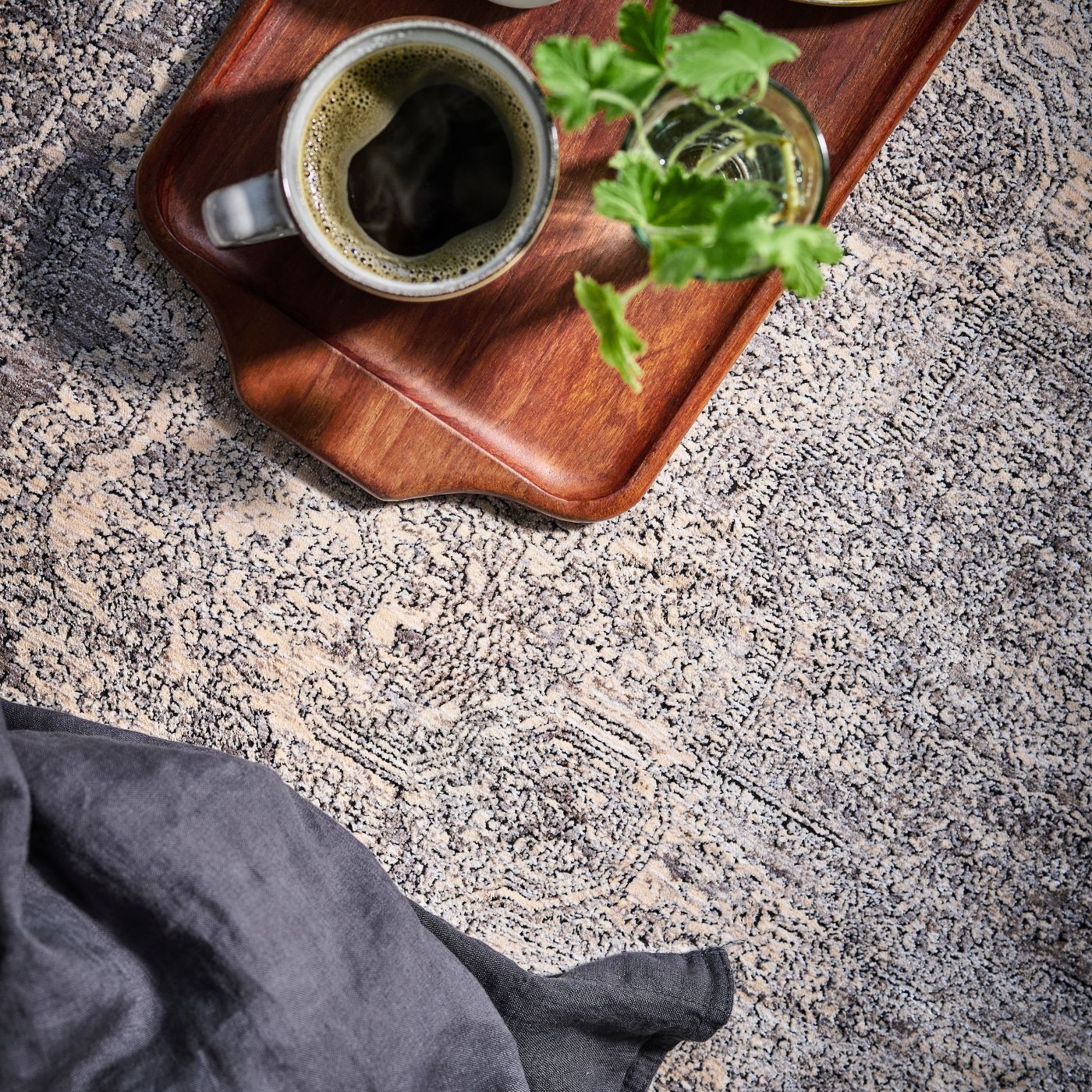
Spot Cleaning Stains & Spills
If a spillage occurs on your rug, address the spill immediately, carefully blotting the excess liquid with a white dry cloth. It's important to blot the area instead of wiping or scrubbing, to prevent further damage to the pile. Use a gentle detergent such as Woolite or a non-biological washing powder and warm water to remove the stain. Do not use bleaching agents or carpet cleaners. If a stain does not come out immediately repeat the process a few times, leaving time for the rug to dry in between. Do not use a detergent or water on jute, viscose, silk or sisal rugs as this can stain the pile permanently.
General Care Tips
By Rug Material
Wool is durable and can offer a certain degree of stain resistance. In order to prevent the fibres getting damaged, vacuum your wool rug once a week at most. You may notice a certain degree of shedding and possible sprouting within the first few months of purchase. This is completely normal and should subside after about 3 months. In the event of a spill or stain blot the liquid with a clean, dry white cloth and clean with non-biological detergent and warm water.
Cotton rugs are typically low maintenance and easy to clean. You can vacuum your cotton rug regularly (at least once a week) to prevent dirt from setting into the fibres. These rugs can also be wiped and shaken clean. Spot clean any spills or stains with warm water and non biological detergent.
Sisal is not water-resistant so avoid contact with water if possible as moisture exposure may result in discolouration and warping. Carefully blot stains with a dry cloth if they occur and avoid placement in areas with high-moisture such as bathrooms and outdoor patios. Vacuum regularly to prevent any dirt from settling into the fibres.
Regular vacuuming is the best way to care for your jute rug. Vacuum once a week on a low setting and avoid using a rotating head or beater bar.
Blot any spills immediately using a dry clean cloth, pressing the cloth firmly into the pile to absorb as much liquid as possible.
You can use a very small amount of non-biological detergent, diluted with warm water to treat any stains. Dampen a clean cloth with the mixture, wringing out any excess moisture. Lightly dab the stained area with the cloth and then use another dry clean cloth or paper towel to absorb any remaining moisture from the area.
These materials are quite delicate and are prone to staining easily so avoid placing in areas of high moisture as this can cause discolouration or bleeding of natural vegetable dyes. It's important to note that these rugs can only be professionally dry cleaned. If a spill occurs, gently blot the rug immediately with a clean, dry cloth or paper towel and seek professional cleaning advice immediately. We recommend you avoid placing silk or viscose rugs in high-traffic areas of the home. Vacuuming can cause the fibres to be pulled up so we would recommend using a carpet sweeper to remove dirt and dust.
Polypropylene and polyester rugs are synthetic and can generally be cleaned with ease. They can be vacuumed frequently and shaken clean. Both materials have a certain degree of stain resistance, however it is difficult to remove long-term stains, so take care when spillages occur and treat immediately. Please not if your polyester rug has a shaggy pile refer to the 'Shaggy Rugs' section of this guide for best cleaning practices.
By Rug Type
Flatweaves are generally low-maintenance and can be wiped and shaken clean. Regular vacuuming can help to keep the rug looking fresh and new. Make sure to double-check the material however, certain materials such as jute should not be in contact with water because discolouration can occur.
If cared for correctly, Persian and Oriental rugs can last a lifetime. These rugs are handknotted from wool and are incredibly durable. As a result they can generally be maintained with weekly vacuuming and spot cleaning. You can also rotate your rug once in a while to stop irregular fading. Take care when spillages occur as the rich colours found in Persian and Oriental rugs are achieved using natural dyes, which can run when exposed to a certain amount of liquid. If a spillage or stain occurs where all or parts of the rug become heavily saturated we recommend drying the rug as much as possible with a clean dry cloth or towel before having your rug professionally cleaned to prevent further damage.
We would recommend having your Persian or Oriental rug professionally cleaned regardless, every few years, to keep your rug looking fresh.
For routine cleaning, vacuum your rug on the lowest setting. Always avoid using a beater bar as this can cause unnecessary wear and tear on the rug fibres.
The material is manufactured to repel liquid. Blot any spills immediately with a clean dry cloth or kitchen paper and the stain should be removed with ease. It's important to note that some liquids with strong tannins may still stain the pile if untreated for an extended period of time.
Lore Machine Washable rugs can also be cleaned in a domestic machine on the largest load setting at 30 degrees. Ensure your rug is the only item in the drum and arranged evenly; do not use detergent. To dry the rug, hang it over a clothesline of place on a flat surface, flipping it every few hours to ensure a quick and even dry. Do not tumble dry.
Shaggy rugs offer comfort and plushness underfoot and are a great option for adding texture to a space. Because the long fibres can trap dirt more easily than short fibre rugs we'd recommend regular cleaning to keep your shaggy rug looking fresh.
First, we'd advise taking the rug outside and shaking out any excess debris. Larger shaggy rugs can be hung over a washing line or railing and beaten with broom handle a few times to remove any excess dirt.
This is typically quite effective at removing everyday dust and wear however for a deeper clean you can also vacuum your shaggy rug using an upholstery attachment or with your vacuum set to the lowest pile setting. If your vacuum has a rotating beater bar it's important to disengage the beater bar before vacuuming your rug. If you can't change these settings, we would advise against vacuuming your shaggy rug to prevent the fibres from being pulled up.
You can also spot clean your shaggy rug by using a dry white microfibre cloth or a soft-bristled brush. Simply dip the brush or towel into a solution of non-biological detergent and warm water and gentle dab at the stain. Rinse away any soapy residue with a clean microfibre towel and blot to dry.
Louis de Poortere eco rugs are crafted from 100% recyclable polyester and can be vacuumed weekly and spot cleaned to maintain the rug. These rugs are also machine washable and can be cleaned in a domestic washing machine at 30 degrees.
Louis de Poorter also offers a Take Care Programme for their eco rugs. This means that when your eco rug has reached the end of it's time with you it's easy to return it. Simply scan the QR code on the rug label and arrange for a free return. The rug is then returned to the supplier and either cleaned and reconditioned or returned to the recycling network to be turned into raw polyester. In this way eco rugs have a circular life making them a more sustainable and eco friendly option.
Normal Things to Expect
Sprouting: Sprouts are small, loose threads that stick up above the pile. They are completely normal and can occur in all rug types, particularly those with a loop pile. The best way to remove them is to take a scissors and trim the tuft with the blade parallel to the pile so that the surface is even. It's important to avoid pulling on the sprouts as this can remove additional strands of material from the rug.
Creases: Your rug may have slight creases as a result of the shipping process. These should disappear after a week. You can speed up the process by rolling your rug in reverse and leaving it overnight.
Shedding: For natural fibres such as wool , you may witness a certain degree of shedding within the first few months of purchase. This is not indicative of the quality of the rug. In this instance, do not over-vacuum the pile as this will cause even more shedding.
Size Variation: Please allow size deviations of up to 5%, particularly with handmade pieces.
Colour: Dye can take differently from rug to rug, because of this, please allow for slight colour discrepancies.
Fading: No rug is 100% fade resistant. Regardless of material and dye, all rugs will fade over time when exposed to direct sunlight. Rotating your rug every so often will ensure even fading.
Odour: Events during the shipping process can sometimes lead to slight odours sticking to the rug. Odours will generally disappear after rug has been removed from its package and aired.



